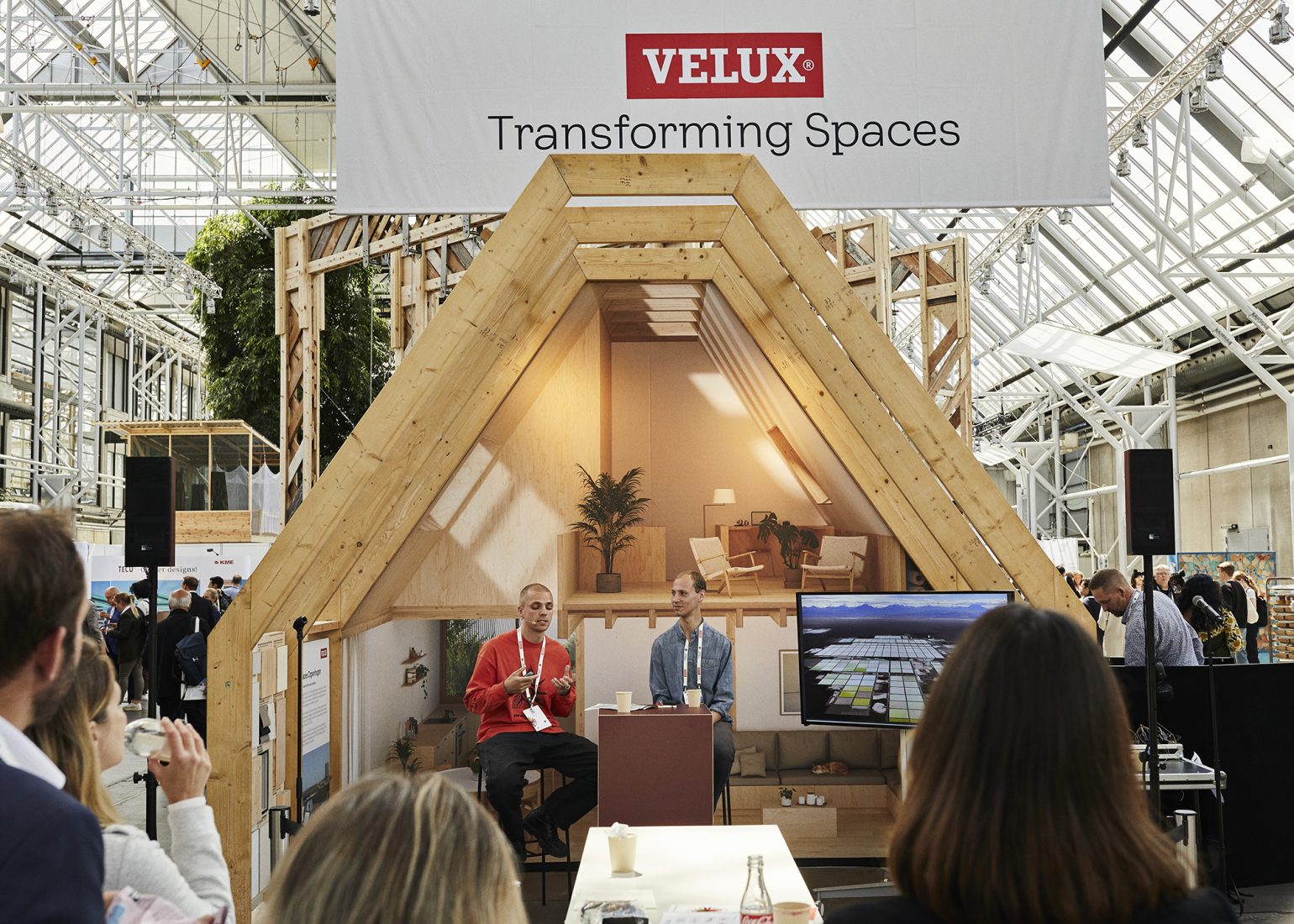With 2023 coming to an end, so is Copenhagen’s role as the UNESCO-UIA World Capital of Architecture. The year has brought along a second-to-none innovation high of tests, examples, and lighthouse projects on sustainability. There is an evident need for innovation in the building industry, and fortunately, the past year has proven that there are numerous solutions demonstrating new ways of working with architecture, materials and construction processes – elements necessary to meet the polycrisis we face for people and planet.
With the building industry accounting for one-third of both the global energy consumption and CO2 emissions, it’s crucial to scale and implement low-carbon solutions faster. Living Places Copenhagen, developed by the VELUX Group and invited partners EFFEKT Architects, Artelia Engineers and Enemærke & Petersen contractors, addresses just that. It works as a prototype demonstrating that it is possible to build more healthy, sustainable, and affordable housing by using existing materials and techniques already available today.

Source:Adam Mork
Through a thorough design and sensibility analysis, each building component and system solution has been optimised for the best combination of indoor climate, carbon footprint and cost. By making conscious decisions, Living Places Copenhagen demonstrates that we can build homes with a CO2 footprint of 3.85 kg /CO2 eq/m2/year – three times lower than the current Danish legislation of 12 kg CO2 eq/m2/year – and at a price that matches the market price for a one-family house or rowhouses at scale. The homes are furthermore designed with a strong focus on creating a healthy indoor climate using daylight and fresh air and delivering a best-in-class indoor climate.
Since the public opening of Living Places Copenhagen in April, a wide range of professionals from the building industry across the globe, as well as politicians and legislators, have visited the site to explore the project and see how responsible and sustainable solutions could be applied to future buildings. As an impact partner at the UIA World Congress of Architects in Copenhagen in July, Living Places Copenhagen hosted a wide range of debates and activities designed to drive and accelerate change in the building industry.
Furthermore, architects from all over the world came to the official SDG Pavilion to learn more about the project. So far, the site has had more than 8,000 guided visitors and hosted more than 200 events, among others the book launch of the Doughnut for Urban Development, The Danish National Housing Fund’s annual congress, the BMW Foundation’s Re*Leadership Festival, and we also welcomed leading European professional housebuilders.

Source:Project VELUX Living Places_Render EFFEKT architects
VELUX Living Places cross-section
The project has furthermore received international recognition and has been awarded four prizes, including two international awards from the American Institute of Architects (AIA) and the EY Sustainability award in the innovation category for its groundbreaking and innovative concept for future housing. It also won the design award of the Danish Bo Bedre magazine in the Innovation of the Year category.

Source:Lasse Bak Mejlvang
With the Living Places prototype in Copenhagen, we in the VELUX Group and our partners have opened a window of opportunity to the industry, towards healthier buildings for people and planet. Our aim with the Living Places project is to ripple the concept, scaling it broadly through knowledge sharing and partnering with pioneers. In October, we took the first important step in achieving this ambition when we entered the first partner agreement with the Dutch housebuilder, Bouwgroep Dijkstra Draisma, which will be the first housebuilder to use the Living Places concept in its development and construction processes and to build a full-scale Living Places prototype in the northern part of the Netherlands.
We are excited to develop and influence the transition in and with the building industry. We do not have to wait; we have to move forward fast, together!

 The Architects’ Journal Architecture News & Buildings
The Architects’ Journal Architecture News & Buildings
